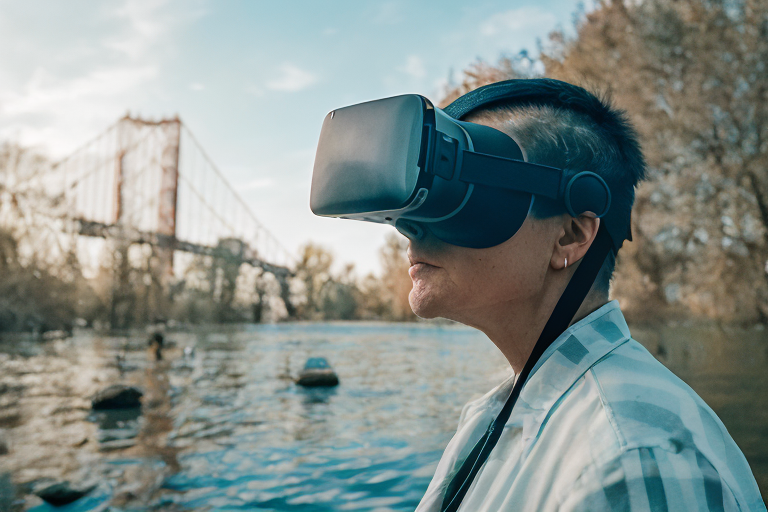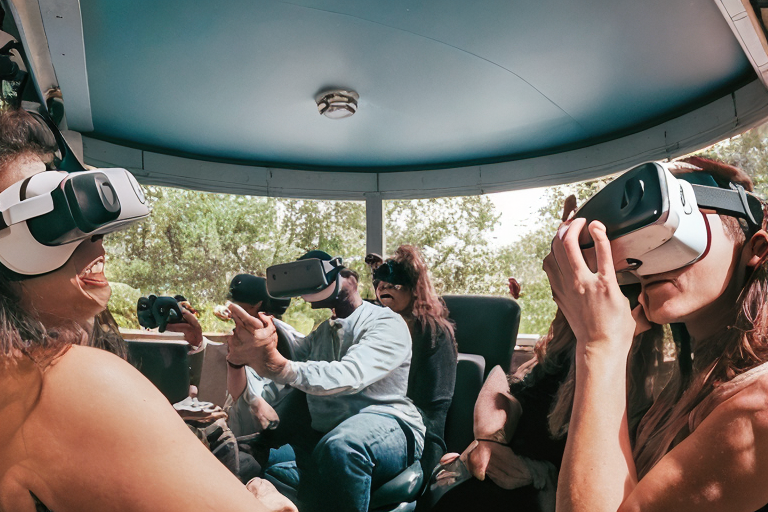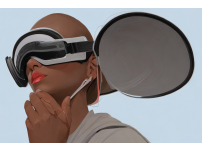비영리 산업에서 가상 현실(VR)의 사용: 기금 모금 및 옹호 강화(The Use of Virtual Reality in th…
본문

가상 현실은 다양한 산업에서 큰 파장을 일으키고 있으며, 비영리 부문도 예외는 아닙니다. 비영리 단체들은 VR 기술을 활용하여 기금 모금 및 홍보 활동을 강화함으로써 지지자들에게 더욱 몰입적이고 효과적인 경험을 제공하고 있습니다.
비영리 산업에서 가상 현실이 어떻게 사용되고 있는지 보여주는 한 가지 예는 지원자들이 자금을 지원하는 프로젝트의 가상 투어를 경험할 수 있도록 하는 것입니다. 예를 들어, 개발도상국의 우물 건설에 초점을 맞춘 비영리 단체는 지지자들이 우물을 파는 것에서부터 물이 흐르는 것을 지켜보는 것에 이르기까지 과정을 가상으로 둘러보게 할 수 있습니다. 이것은 지지자들이 그들의 기부가 만들어내는 영향을 진정으로 볼 수 있게 해주고, 그 원인과 더 연관성을 느낄 수 있게 해줍니다.
비영리 산업에서 VR이 사용되는 또 다른 방법은 가상 옹호 경험을 제공하는 것입니다. 예를 들어, 동물 복지에 초점을 맞춘 비영리 단체는 VR을 사용하여 지지자들이 사육 상태에서 동물이 되는 것이 어떤 것인지 경험할 수 있도록 하여 그들의 작업의 중요성을 강조할 수 있습니다. 이러한 유형의 경험은 믿을 수 없을 정도로 강력하고 감동적일 수 있으며 조직에 대한 지원 증가로 이어질 수 있습니다.

한국에서, 한국보육협회는 그들의 모금 노력에 가상현실 기술을 도입했습니다. 그들은 VR을 사용하여 잠재적인 기부자들에게 그들이 지원하는 어린이집에 대한 몰입감 있는 경험을 제공하여 아이들이 놀고 직원들과 상호 작용하는 것을 볼 수 있도록 합니다. 이것은 조직이 자금을 확보하는 데 도움이 될 뿐만 아니라 기부자와 그들이 지원하는 아이들 사이에 더 강력한 연결을 구축하는 데에도 도움이 됩니다.
결론적으로, 가상 현실은 비영리 단체가 지지자들과 참여하고 그들의 대의를 진전시키는 방식에 혁명을 일으킬 수 있는 잠재력을 가지고 있습니다. VR 기술은 보다 몰입적이고 효과적인 경험을 제공함으로써 지원, 자금 지원 및 옹호 노력을 증가시켜 궁극적으로 임무를 달성하는 데 더 큰 성공으로 이어질 수 있습니다.
요약:.
가상 현실은 비영리 단체가 지지자들과 협력하고 그들의 대의를 추진하는 방식을 변화시켜 보다 몰입적이고 효과적인 경험을 제공하고 있습니다. 한국에서, 한국보육협회는 그들이 지원하는 어린이집을 보여주고 기부자들과 그들이 돕고 있는 아이들 사이의 연결을 구축하면서, 그들의 모금 노력을 강화하기 위해 VR 기술을 활용했습니다. VR은 비영리 산업에 혁명을 일으킬 수 있는 잠재력을 가지고 있으며, 이를 통해 지원이 증가하고 미션을 달성하는 데 성공할 수 있습니다.

가상 현실(VR) 기술은 다양한 분야와 과제에 혁신적이고 효과적인 솔루션을 제공하면서 산업 전반에 걸쳐 빠르게 확장되고 있습니다. 비영리 산업도 예외가 아닙니다. VR은 이해 관계자와 협력하고, 기금 모금과 옹호 노력을 늘리고, 중요한 원인에 주의를 기울일 수 있는 새롭고 혁신적인 방법을 제공하기 때문입니다.
예를 들어, VR 기술은 다양한 사회 및 환경 문제에 대한 관심을 불러일으키는 몰입형 경험을 만들기 위해 수많은 비영리 단체에 의해 활용되었습니다. 이러한 경험은 조직과 이해 관계자 간의 더 깊은 연결을 형성하고, 지지와 지지를 이끌어내는 데 도움이 됩니다.
게다가, VR은 기금 모금과 옹호 노력을 위한 도구로도 사용될 수 있습니다. 예를 들어, 빈곤 또는 노숙과 같은 특정 문제에 영향을 받는 개인의 삶을 시뮬레이션하는 VR 경험이 만들어질 수 있습니다. 이러한 경험은 문제에 대한 더 깊은 이해를 유발하고, 문제를 해결하기 위한 비영리 단체의 노력에 대한 대중의 지지를 높이는 데 도움이 될 수 있습니다.
게다가, VR 기술은 훈련과 개발 목적으로도 사용될 수 있습니다. 비영리 단체는 VR 시뮬레이션을 사용하여 갈등 해결 또는 효과적인 의사소통과 같은 업무의 다양한 측면에 대해 자원봉사자와 직원을 교육할 수 있습니다. 이를 통해 직원과 자원봉사자뿐만 아니라 조직의 역량을 강화할 수 있는 효과적이고 효율적인 방법이 제공됩니다.
한국에서, 정부는 다양한 계획을 강화하기 위해 비영리 부문에서 VR 기술을 활용해 왔습니다. 예를 들어, 한국 정부는 재생 에너지의 중요성과 폐기물 감소와 같은 중요한 사회적, 환경적 문제에 대해 시민들을 교육하기 위해 VR 시뮬레이션을 사용해 왔습니다. 게다가, 한국의 다양한 비영리 단체들은 동물 권리와 장애 옹호와 같은 다양한 원인에 대한 인식과 기금을 모으기 위해 VR 경험을 사용해 왔습니다.
결론적으로, 가상 현실 기술은 기금 모금, 옹호 및 역량 강화 노력을 위한 혁신적인 솔루션을 제공함으로써 비영리 산업에 혁명을 일으킬 수 있는 잠재력을 가지고 있습니다. 한국에서 VR 기술의 활용은 비영리 부문에서 이 기술의 잠재력을 보여주는 좋은 예가 되며, 이 분야에 대한 지속적인 투자와 개발의 필요성을 강조합니다.
Virtual reality has been making waves in a variety of industries, and the nonprofit sector is no exception. Nonprofit organizations are leveraging VR technology to enhance their fundraising and advocacy efforts, providing a more immersive and impactful experience for their supporters.
One example of how virtual reality is being used in the nonprofit industry is by allowing supporters to experience virtual tours of the projects they are funding. For example, a nonprofit focused on building wells in developing countries could take supporters on a virtual tour of the process, from digging the well to watching the water flow. This allows supporters to truly see the impact their donations are making, and feel more connected to the cause.
Another way that VR is being used in the nonprofit industry is by providing virtual advocacy experiences. For example, a nonprofit focused on animal welfare could use VR to allow supporters to experience what it is like to be an animal in captivity, highlighting the importance of their work. This type of experience can be incredibly powerful and moving, and can lead to increased support for the organization.
In Korea, the Korea Childcare Association has implemented VR technology in their fundraising efforts. They use VR to provide potential donors with an immersive experience of the daycare centers they are supporting, allowing them to see the children playing and interacting with the staff. This not only helps the organization to secure funding but also helps to build a stronger connection between the donors and the children they are supporting.
In conclusion, virtual reality has the potential to revolutionize the way nonprofits engage with their supporters and advance their causes. By providing more immersive and impactful experiences, VR technology can help to increase support, funding, and advocacy efforts, ultimately leading to greater success in achieving their mission.
Summary:
Virtual reality is transforming the way nonprofits engage with supporters and advance their causes, providing more immersive and impactful experiences. In Korea, the Korea Childcare Association has leveraged VR technology to enhance their fundraising efforts, showcasing the daycare centers they are supporting and building a connection between the donors and the children they are helping. VR has the potential to revolutionize the nonprofit industry, leading to increased support and success in achieving their mission.
Virtual reality (VR) technology is rapidly expanding across industries, providing innovative and impactful solutions to various sectors and challenges. The nonprofit industry is no exception, as VR offers new and innovative ways to engage with stakeholders, increase fundraising and advocacy efforts, and bring attention to important causes.
For example, VR technology has been utilized by numerous non-profit organizations to create immersive experiences that bring attention to various social and environmental issues. These experiences help to create a deeper connection between the organization and its stakeholders, and generate support and interest in the causes being advocated for.
Additionally, VR can also be used as a tool for fundraising and advocacy efforts. For example, VR experiences can be created that simulate the lives of individuals affected by a particular issue, such as poverty or homelessness. These experiences can help generate a deeper understanding of the problem, and increase public support for the nonprofit's efforts to solve it.
Moreover, VR technology can also be used for training and development purposes. Nonprofits can use VR simulations to train volunteers and staff on various aspects of their work, such as conflict resolution or effective communication. This provides an effective and efficient way to build the capacity of the organization, as well as its staff and volunteers.
In South Korea, the government has been utilizing VR technology in the nonprofit sector to enhance various initiatives. For example, the Korean government has been using VR simulations to educate citizens on important social and environmental issues, such as the importance of renewable energy and reducing waste. Additionally, various non-profit organizations in South Korea have been using VR experiences to raise awareness and funds for various causes, such as animal rights and disability advocacy.
In conclusion, virtual reality technology has the potential to revolutionize the nonprofit industry, providing innovative solutions to enhance fundraising, advocacy, and capacity building efforts. The utilization of VR technology in South Korea serves as a great example of the potential for this technology in the nonprofit sector, and highlights the need for continued investment and development in this field.














댓글목록 0